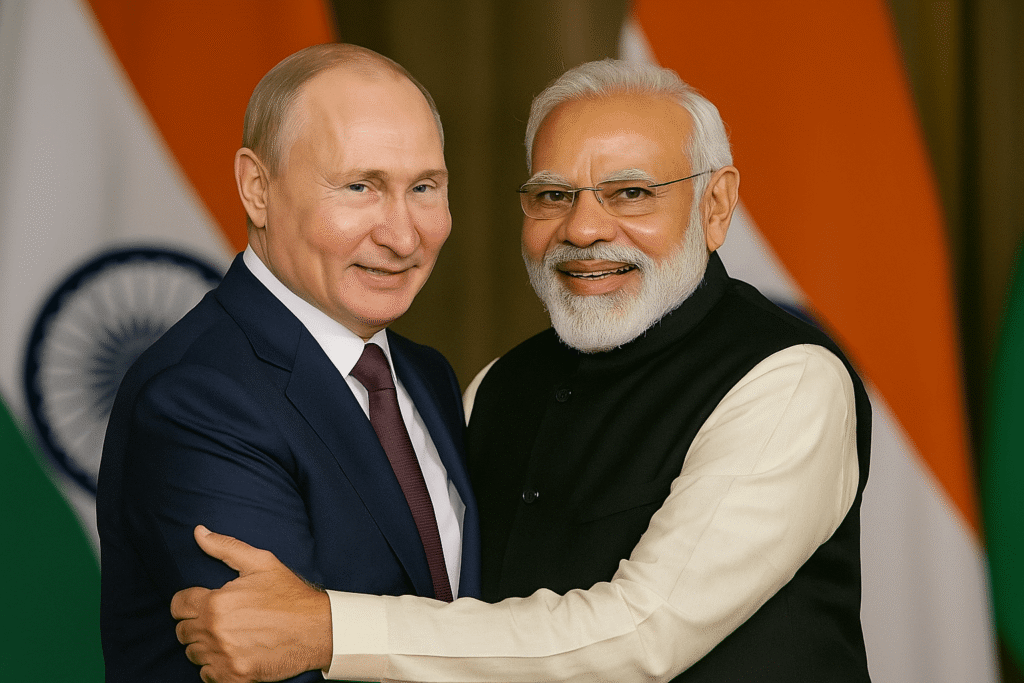
India’s defense ecosystem is undergoing a tectonic shift. No longer willing to play the role of a passive arms buyer, India has launched a bold, forward-looking India defense strategy focused on strategic autonomy, co-development, and indigenous defense production. With this transformation, India signals to global powers, especially the U.S. and Russia, that transactional arms deals are no longer enough. Instead, strategic defense partnerships backed by technology transfer and local manufacturing are now the core prerequisites.
This evolution isn’t just a policy update. It’s a definitive reset of how India approaches national security, defense procurement, and military modernization setting the stage for Indian defense policy 2025 to align with long-term geopolitical and economic goals.
India’s Rejection of Passive Defense Deals Sends a Strong Global Message
India has become increasingly selective about its international defense collaborations. The sidelining of the much-hyped American F-35 stealth fighter speaks volumes. While once considered a crown jewel of U.S. air power, India rejected the F-35 due to its lack of technology transfer, overdependence on U.S. logistics, and concerns over stealth performance.
During trials, F-35Bs were allegedly tracked by Indian radar systems, raising questions about their greater stealth. The aircraft’s absence from key Indian defense exhibitions only deepened suspicions. Rather than investing in another costly import, India has chosen to double down on the Advanced Medium Combat Aircraft (AMCA) a fifth-generation fighter jet built by India, for India.
This is no isolated decision. The same scrutiny applied to Russia’s Su-57E offer. Although Moscow presented attractive terms, including source code access and co-production rights, India remained cautious. Memories of the earlier FGFA project, which collapsed over technological and cost concerns, still loom large. India prefers to collaborate, not depend a stance echoed across every layer of the new India defense strategy.
Indigenous Defense Production and Strategic Partnerships Take Center Stage
India has now placed indigenous defense production at the heart of its strategic vision. The shift is most visible in how India is treating outdated or underperforming platforms. For example, in high-altitude tests conducted throughout Ladakh, the Stryker Infantry Combat Vehicle, manufactured in the United States, did not operate up to par. Its inability to handle rugged terrain and payload capacity forced India to reassess the need for such imports.
Instead, India is accelerating the development of its own Future Infantry Combat Vehicle (FICV) and Zorawar light tank, both of which are designed with the specific requirements of Indian terrain and battlefield conditions in mind. This isn’t just about pride it’s about performance, cost-efficiency, and strategic independence.
The renowned Javelin missile system is also losing ground. While it’s globally respected, India is leaning toward the MPATGM (Man-Portable Anti-Tank Guided Missile), developed domestically by DRDO. MPATGM has shown excellent results in tests, offers local production capabilities, and aligns perfectly with India’s focus on self-reliance.
India Defense Strategy: A Blueprint for Global Military Balance
What we’re witnessing is not just India’s military modernization it’s a realignment of global military equations. It is evident that the days of India’s military headlines being dominated by its weaponry imports are coming to an end. Today, India is entering into strategic defense partnerships that emphasize mutual benefit, knowledge sharing, and future-ready innovation.
Countries like France, Israel, and Japan are stepping into the spotlight, providing India with access to cutting-edge defense technologies under more balanced terms. These relationships differ fundamentally from traditional vendor-client dynamics, and reflect the India US Russia defense relations in a new, multipolar world.
India Is Writing Its Own Defense Playbook
The new India defense strategy isn’t reactionary, it’s revolutionary. By insisting on technology transfer, rejecting one-sided arms deals, and prioritizing indigenous development, India is boldly carving out a position as a self-reliant military power.
This strategy also serves as a wake-up call to global defense suppliers: If they want to work with India, they must align with its new expectations. The country’s commitment to autonomy, innovation, and long-term capability-building isn’t a temporary trend. It’s the future of Indian defense policy 2025, and it’s reshaping the way India engages with the world.
